Heat Transfer Lab
Our Work: We focus on experimental and numerical studies of heat transfer. A major focus area is on porous media, such as packed beds used in Thermal Energy Storage. Our studies range from the microscale (e.g. pore scale analysis) to the macroscale (e.g. lab scale analysis).
Click here to find out details on recent projects:
- Local temperature and velocity measurements in packed beds
- Experimental and numerical studies in packed bed thermal energy storage- lab scale
- Radial flow packed bed thermal energy storage
- Supercritical fluids
Local Temperature and Velocity in Packed Beds
We are using experimental and numerical techniques to study velocity and temperature in packed beds. In typical approaches to non-isothermal flows in packed bed, thermocouples are used to measure the temperature at a few spots in the bed or the fluid temperature at the inlet/outlet. The velocity in empirical correlations is often the empty bed velocity, and no detailed information is available on flow through the pores. This lack of data leads to a lack of understanding and inaccurate design correlations.
Using magnetic resonance microscopy in the Magnetic Resonance Laboratory, we are able to measure the velocity and heat transfer behavior together in the bed non-invasively. This study is under NSF Award 1511045. We use encapsulated wax particles to make the packed bed. When these are heated and the wax melts, more signal is generated and this 'light-on/light-off' effect can be imaged. An example experimental result for velocity and melt front is shown below in one cross-section.

[With permission from Elsevier - M.E. Skuntz, D. Perera, J.E. Maneval, J.D. Seymour, R. Anderson, Melt-front propagation and velocity profiles in packed beds of phase-change materials measured by magnetic resonance imaging, Chemical Engineering Science 190 (2018) 164-172.]
These experimental results can be used to verify numerical models. To compare at the pore scale, we use discrete element method (DEM) models to generate numerical packed beds. This solid domain is then coupled with computational fluid dynamics to solve for the heat transfer and fluid flow behavior. The schematic below shows similar results between the experimental result and the numerical result.
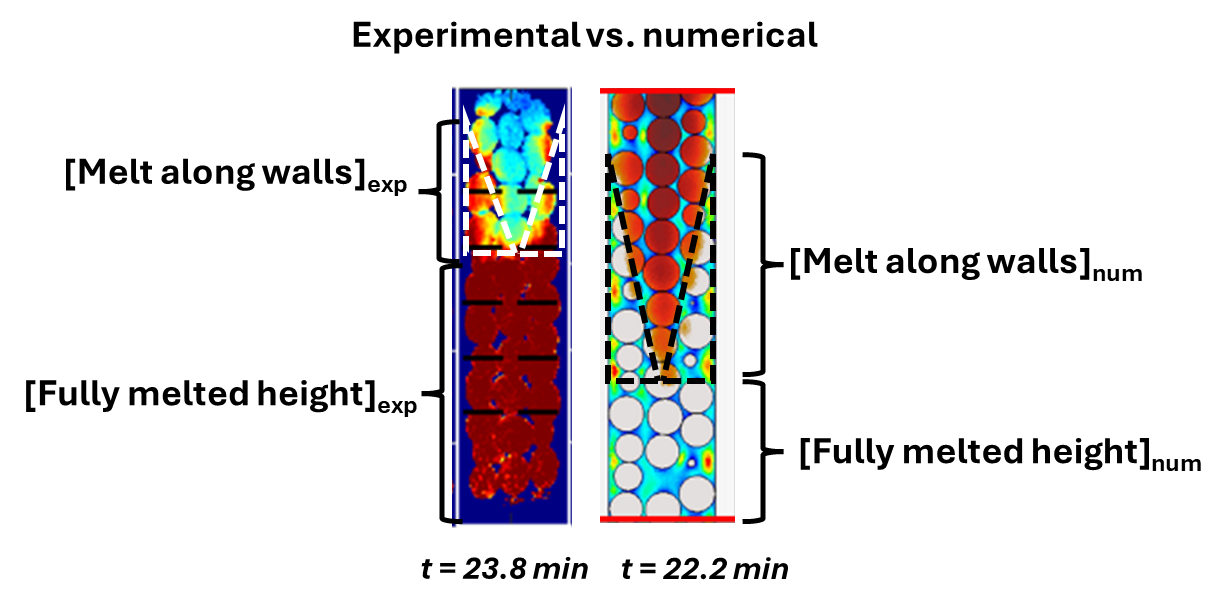
Thermal Energy Storage in Packed Beds- Lab Scale
Storing excess thermal energy from the sun can be useful in a range of applications including electricity production in concentrated solar power (CSP) plants, desalination, and enhanced oil recovery. Storage allows the heat to be utilized when the sun is no longer shining. A packed bed filled with a solid storage media is one method to store the thermal energy. Our lab-scale setup allows for a range of flow configurations, packing materials, and cycling conditions to be studied experimentally with air up to 300oC. The temperatures inside the bed and on the vessel walls are measured, and thermal exergy efficiencies are calculated.

These experimental results are used in conjunction with numerical models. These approaches have allowed us to study a range of systems, including traditional axial flow with cycling, custom ceramic materials for TES, and new approaches to charging the bed such as via axial segments or via radial flow. Links to these topics are provided below.
|
|
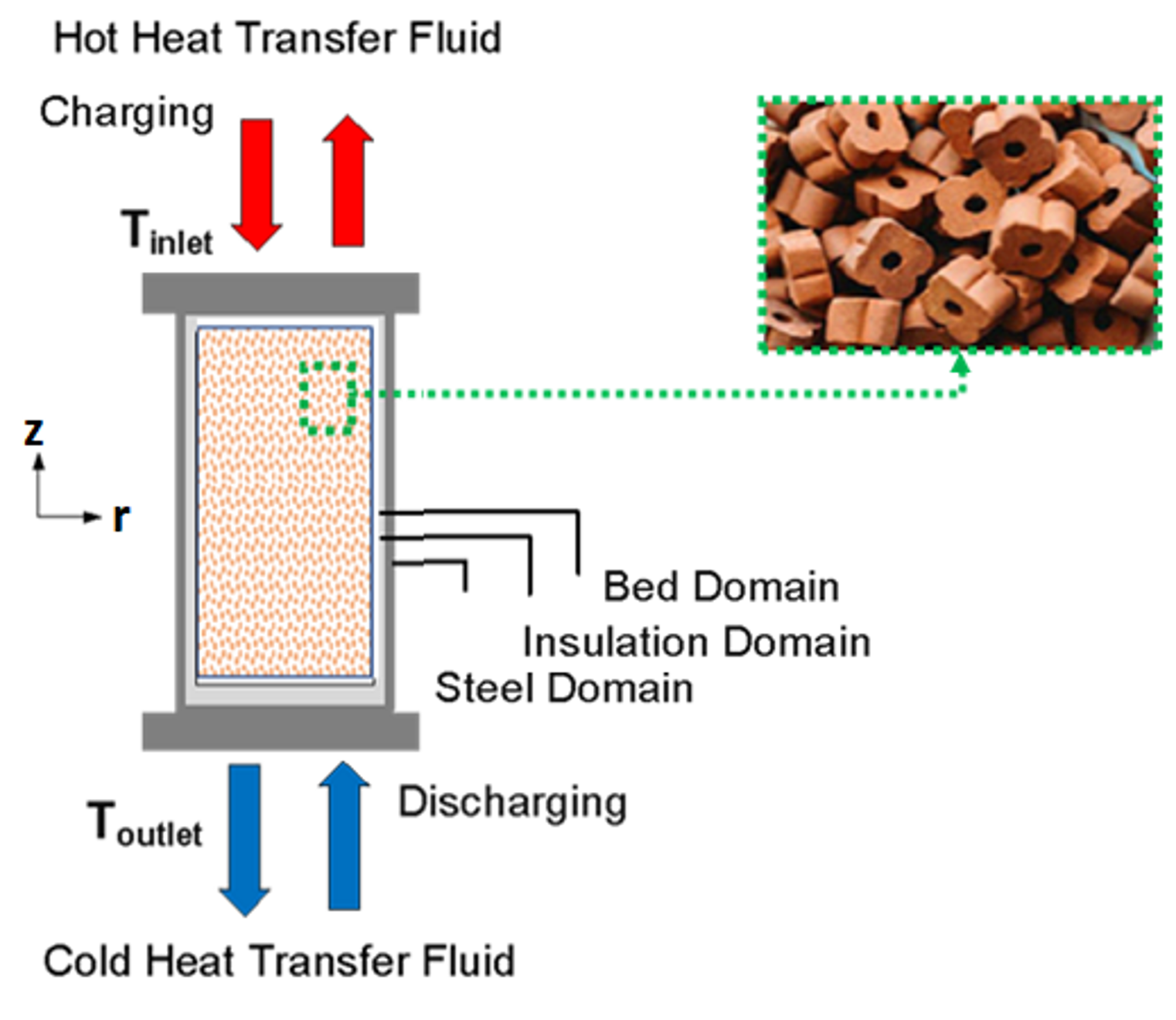 |
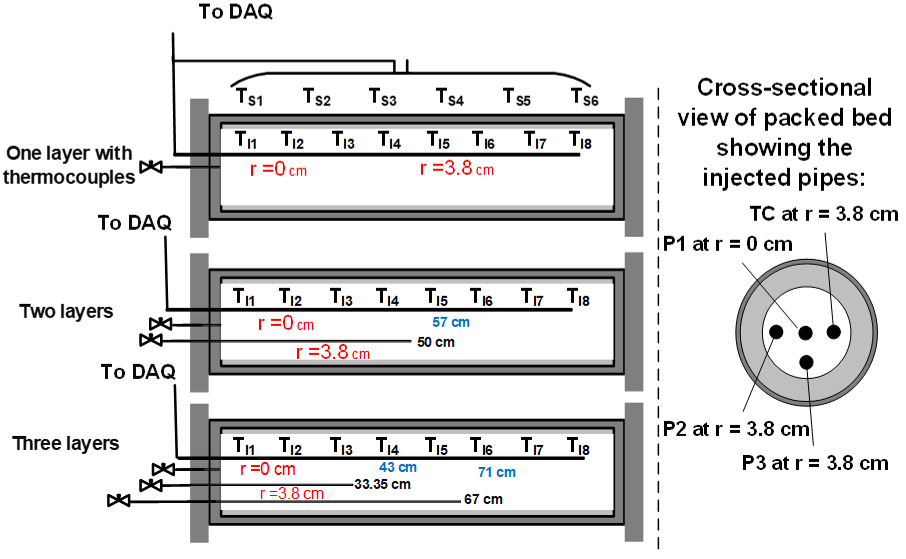 |
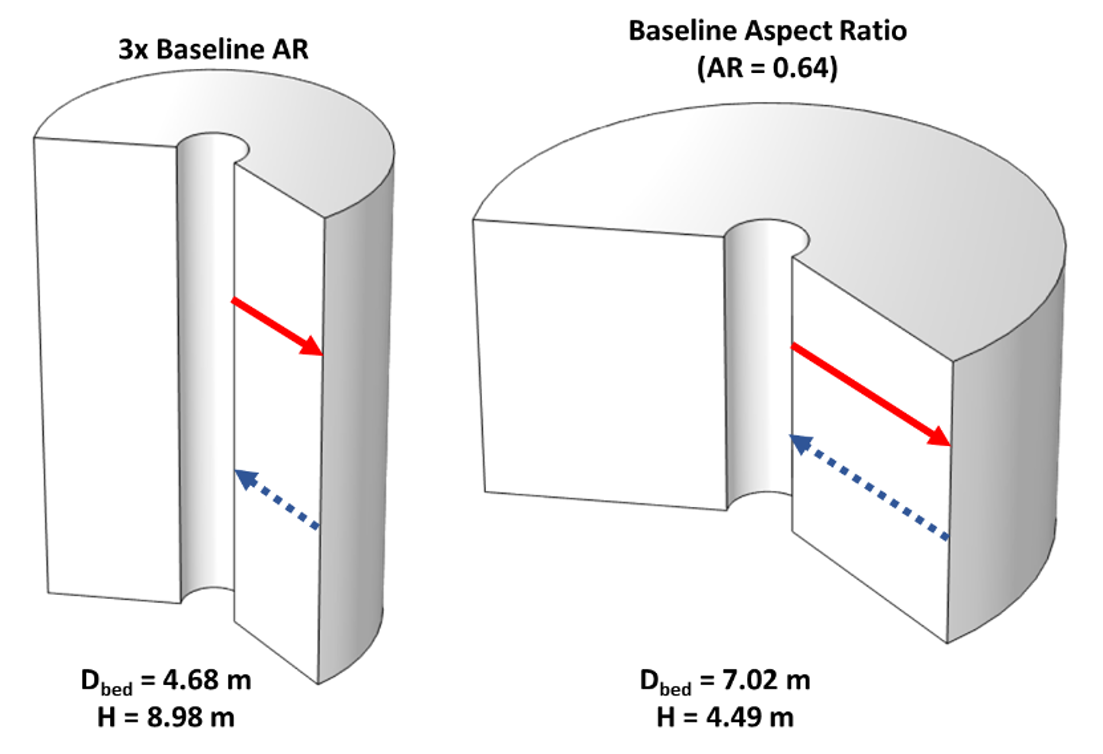 |
[All with permission from Elsevier]
Top Left: Experimental study on the cyclic behavior of thermal energy storage in an air-alumina packed bed
Bottom Left: Experimental Study of Layered Thermal Energy Storage in an Air-Alumina Packed Bed Using Axial Pipe Injections
Bottom Right: System efficiency of packed bed TES with radial flow vs. axial flow – influence of aspect ratio
Radial Flow Packed Bed TES
An alternative to axial flow in packed bed TES is radial flow, where fluid moves from the center to the wall during charging. As part of DOE Award DE-EE0009384, we studied radial flow with numerical and experimental approaches. Two such radial flow configurations are shown below. A website dedicated to all aspects of the topic is here: Radial Flow Packed Bed TES
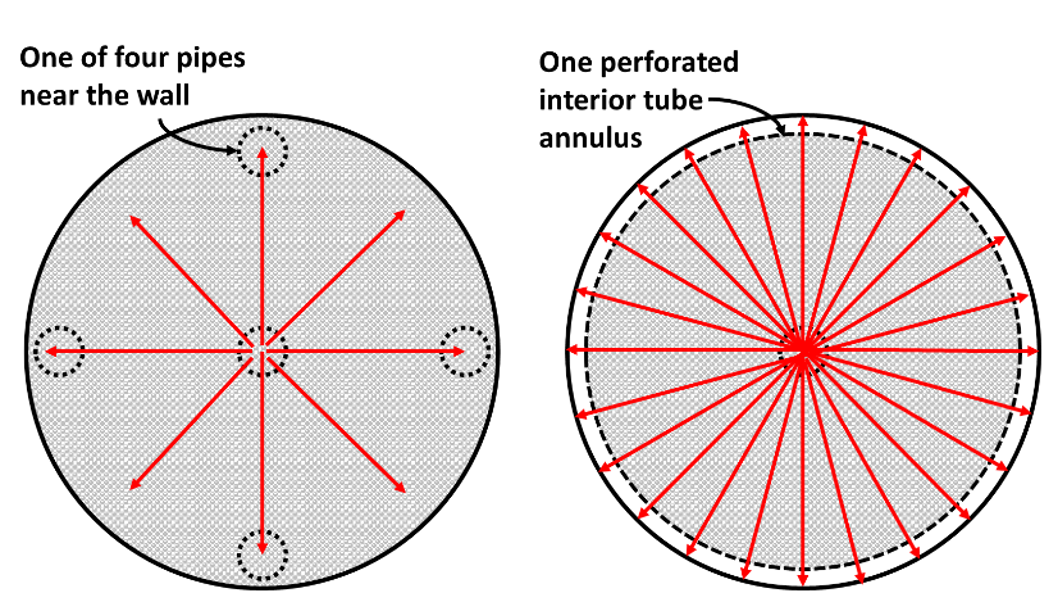
Supercritical Fluids
Supercritical carbon dioxide (sCO2) is emerging as a potential fluid in supercritical Brayton cycles. Excess thermal energy could be stored in a packed bed, similar to the air-alumina system described above. Our recent numerical work has focused on the exergetic efficiency of a commercial-scale packed bed TES unit undergoing several charge-discharge cycles. Our recent analysis is here. A 2D axi-symmetric model solves for the temperature in the bed, insulation, and vessel over time.

[Shown here with permission from Elsevier]
Fluids near their critical point also exhibit interesting , such as the thermal diffusivity varying strongly with temperature and pressure. We can see the time to heat a packed bed varies substantially based on the fluid state. This work is published in: Observation of Heat Transfer Due to Variable Thermophysical Properties of Sub-, Near- and Super- Critical Fluids in Porous Media by Magnetic Resonance Imaging


